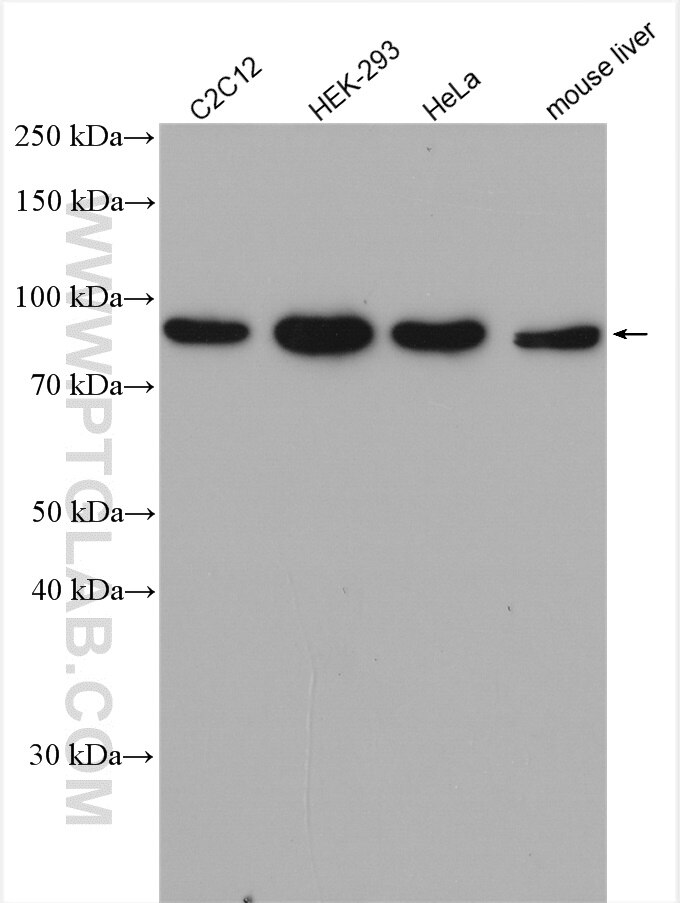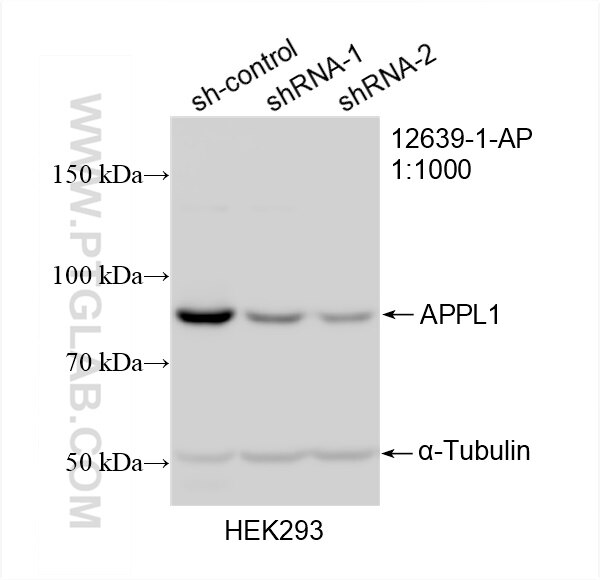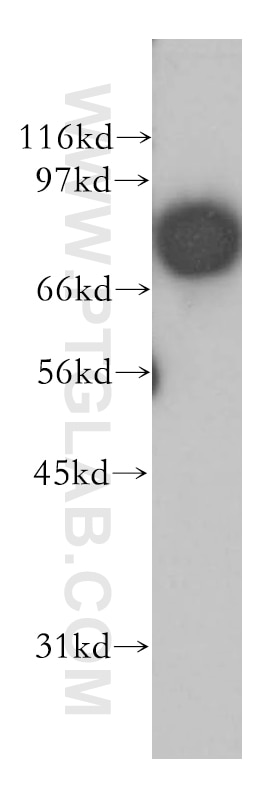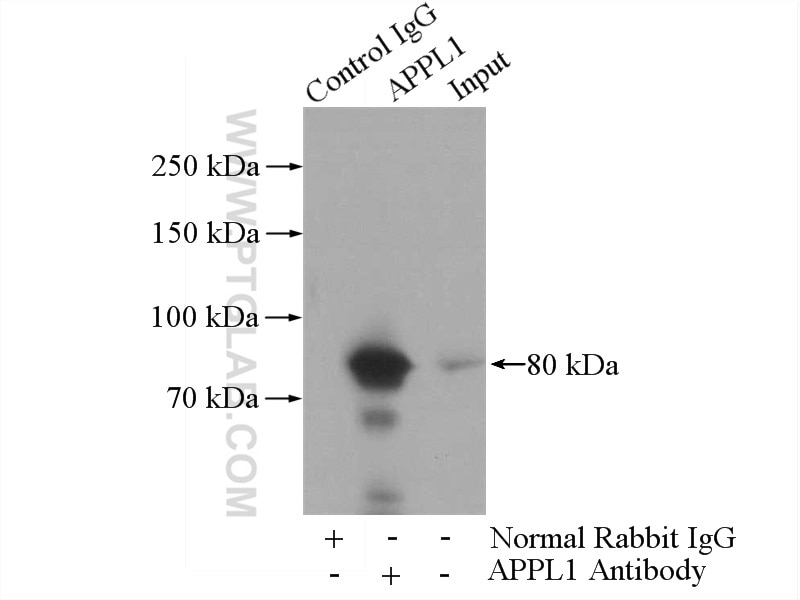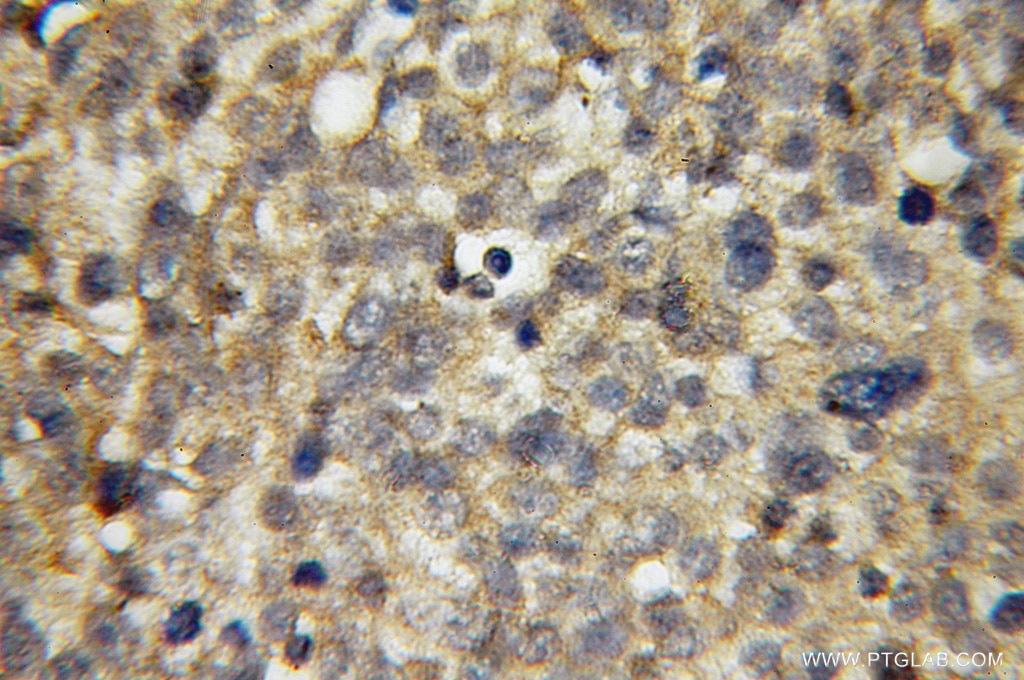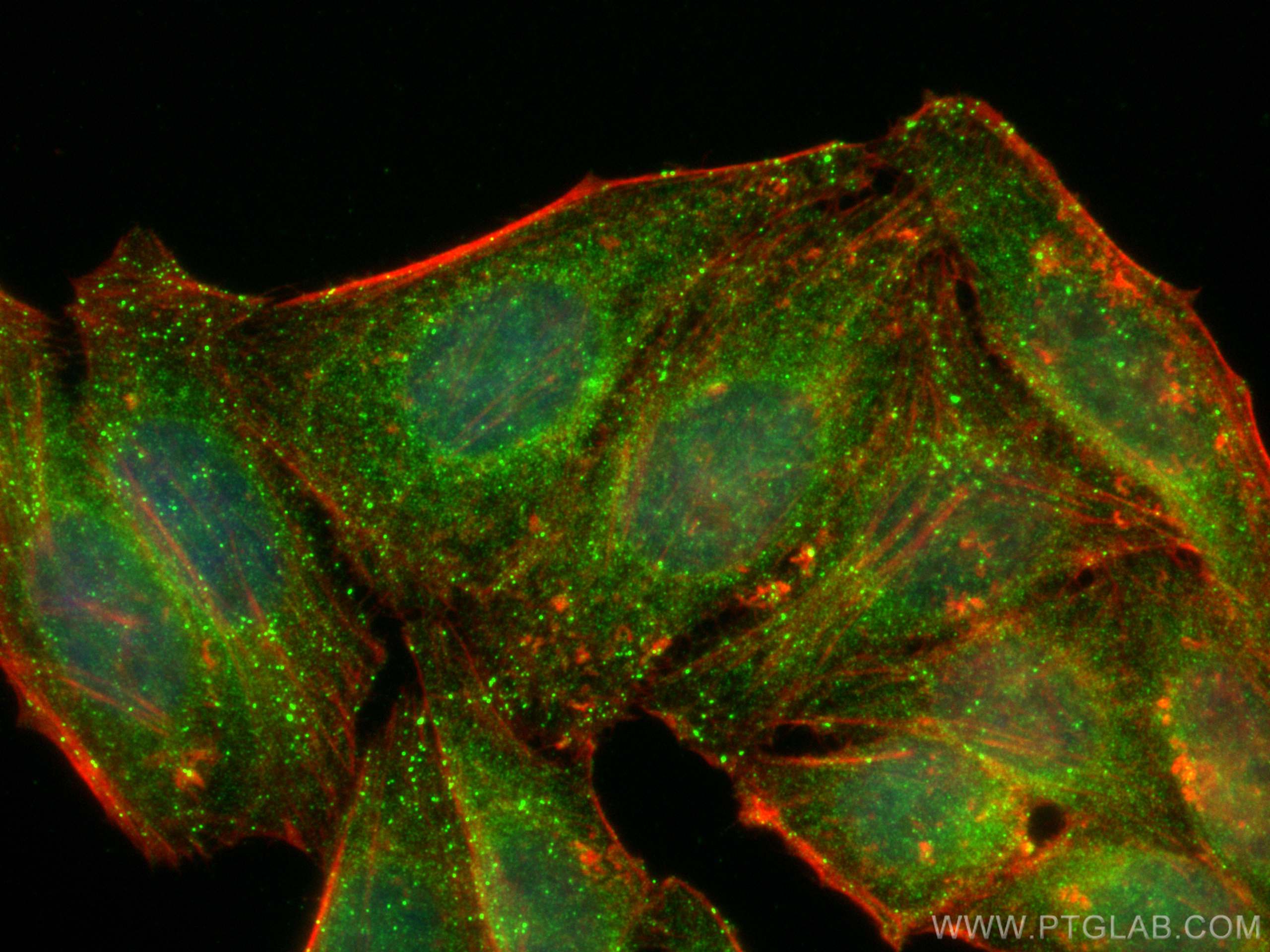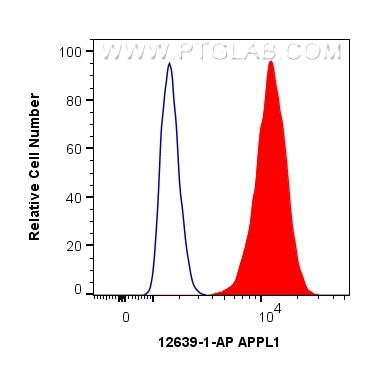Tested Applications
| Positive WB detected in | C2C12 cells, HEK-293 cells, mouse ovary tissue, HeLa cells, mouse liver tissue |
| Positive IP detected in | mouse brain tissue |
| Positive IHC detected in | human ovary tumor tissue Note: suggested antigen retrieval with TE buffer pH 9.0; (*) Alternatively, antigen retrieval may be performed with citrate buffer pH 6.0 |
| Positive IF/ICC detected in | HepG2 cells |
| Positive FC (Intra) detected in | HepG2 cells |
Recommended dilution
| Application | Dilution |
|---|---|
| Western Blot (WB) | WB : 1:2000-1:10000 |
| Immunoprecipitation (IP) | IP : 0.5-4.0 ug for 1.0-3.0 mg of total protein lysate |
| Immunohistochemistry (IHC) | IHC : 1:20-1:200 |
| Immunofluorescence (IF)/ICC | IF/ICC : 1:50-1:500 |
| Flow Cytometry (FC) (INTRA) | FC (INTRA) : 0.40 ug per 10^6 cells in a 100 µl suspension |
| It is recommended that this reagent should be titrated in each testing system to obtain optimal results. | |
| Sample-dependent, Check data in validation data gallery. | |
Published Applications
| KD/KO | See 1 publications below |
| WB | See 10 publications below |
| IHC | See 1 publications below |
| IF | See 4 publications below |
Product Information
12639-1-AP targets APPL1 in WB, IHC, IF/ICC, FC (Intra), IP, ELISA applications and shows reactivity with human, mouse, rat samples.
| Tested Reactivity | human, mouse, rat |
| Cited Reactivity | human, mouse, rat |
| Host / Isotype | Rabbit / IgG |
| Class | Polyclonal |
| Type | Antibody |
| Immunogen |
CatNo: Ag3334 Product name: Recombinant human APPL1 protein Source: e coli.-derived, PGEX-4T Tag: GST Domain: 405-709 aa of BC028599 Sequence: QQRHESLRPAAGQSRPPTARTSSSGSLGSESTNLAALSLDSLVAPDTPIQFDIISPVCEDQPGQAKAFGQGGRRTNPFGESGGSTKSETEDSILHQLFIVRFLGSMEVKSDDHPDVVYETMRQILAARAIHNIFRMTESHLLVTCDCLKLIDPQTQVTRLTFPLPCVVLYATHQENKRLFGFVLRTSSGRSESNLSSVCYIFESNNEGEKICDSVGLAKQIALHAELDRRASEKQKEIERVKEKQQKELNKQKQIEKDLEEQSRLIAASSRPNQASSEGQFVVLSSSQSEESDLGEGGKKRESEA Predict reactive species |
| Full Name | adaptor protein, phosphotyrosine interaction, PH domain and leucine zipper containing 1 |
| Calculated Molecular Weight | 709 aa, 80 kDa |
| Observed Molecular Weight | 80 kDa |
| GenBank Accession Number | BC028599 |
| Gene Symbol | APPL1 |
| Gene ID (NCBI) | 26060 |
| RRID | AB_2289669 |
| Conjugate | Unconjugated |
| Form | Liquid |
| Purification Method | Antigen affinity purification |
| UNIPROT ID | Q9UKG1 |
| Storage Buffer | PBS with 0.02% sodium azide and 50% glycerol, pH 7.3. |
| Storage Conditions | Store at -20°C. Stable for one year after shipment. Aliquoting is unnecessary for -20oC storage. 20ul sizes contain 0.1% BSA. |
Background Information
Adaptor protein, phosphotyrosine interaction, PH domain and leucine zipper containing 1 (APPL1), a binding partner of Akt2 and an important regulator of INS signaling, plays a key role in the regulation of INS secretion [PMID:22615370]. APPL1 interacts with adiponectin receptors and mediates the INS-sensitizing effects of adiponectin in muscle and endothelial cells. It also participates in nuclear signaling and transcriptional regulation, mostly by modulating the activity of various nuclear factors [PMID:22685329]. Apart from its role in endocytosis and endosomal transport, APPL1 was reported to undergo nucleocytoplasmic shuttling and participate in transcriptional regulation, e.g. by interactions with histone deacetylases (HDACs) [PMID:19686092].
Protocols
| Product Specific Protocols | |
|---|---|
| IF protocol for APPL1 antibody 12639-1-AP | Download protocol |
| IHC protocol for APPL1 antibody 12639-1-AP | Download protocol |
| IP protocol for APPL1 antibody 12639-1-AP | Download protocol |
| WB protocol for APPL1 antibody 12639-1-AP | Download protocol |
| Standard Protocols | |
|---|---|
| Click here to view our Standard Protocols |
Publications
| Species | Application | Title |
|---|---|---|
Oxid Med Cell Longev DDAH1/ADMA Regulates Adiponectin Resistance in Cerebral Ischemia via the ROS/FOXO1/APR1 Pathway. | ||
J Cell Sci ESCRT-0 marks an APPL1-independent transit route for EGFR between the cell surface and the EEA1-positive early endosome. | ||
J Biol Chem Endocytosis is required for C-X-C chemokine receptor type 4 (CXCR4)-mediated Akt activation and anti-apoptotic signaling.
| ||
J Agric Food Chem Naringin Promotes Skeletal Muscle Fiber Remodeling by the AdipoR1-APPL1-AMPK Signaling Pathway. | ||
Biol Reprod Myosin VI maintains the actin-dependent organization of the tubulobulbar complexes required for endocytosis during mouse spermiogenesis. | ||
Brain Res Characterization and distribution of adaptor protein containing a PH domain, PTB domain and leucine zipper motif (APPL1) in Alzheimer's disease hippocampus: an immunohistochemical study. |
Reviews
The reviews below have been submitted by verified Proteintech customers who received an incentive for providing their feedback.
FH Ying (Verified Customer) (09-11-2023) | used for WB and IFC of brain section of wild type and APPL1 transgenic mice
 |
FH Sophie (Verified Customer) (11-11-2022) | I used the antibody in a western blot, my samples were primary B-cell lysates (10ug/lane). The antibody did label APPL1 around the 80kDa mark, but I did see another band lower down, around 37kDa - maybe this is a cleavage product?
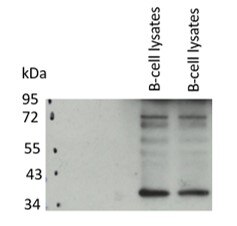 |
FH X (Verified Customer) (01-18-2021) | Very strong and specific signal in WB with mouse brain lysate
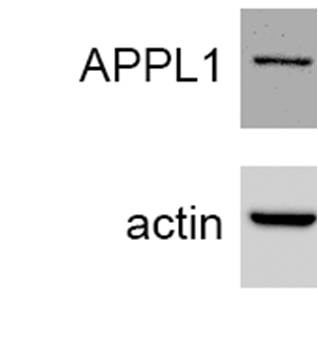 |

